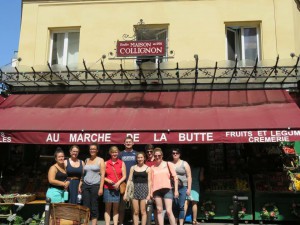Today was another long and sweltering hot day in Paris, but it was a very exciting day as well. After our first breakfast in France (croissants and espresso!), we got our introduction to the vaunted Paris Metro, famous for being fast and efficient, and for having so many subway stations you are never more than a ten minute walk away from one. After getting our Navigo passes, which are the cards that are used with the metro system, we set out to use the metro for the first time in order to pick up the sim cards for our French phones. After taking the tram, an aboveground train, to a subway station, and riding the subway for two stops, we arrived at the rue de Alesia. I have to say, the Paris metro lives up to all the hype. Walking down the rue de Alesia, we discovered that the cell phone store was no longer there! This was by no means a waste of a trip though. In addition to using the Paris Metro for the first time and walking in the breathtaking streets of Paris, we also stopped at a store to pick up a few things. We then had lunch at this awesome kebab place.
After walking back to the Cite U, we were treated to a guided tour of the campus. An architecture student who lives at the Cite U taught us more about the history of the Cite U and the architecture of the buildings, with a focus on the Swiss house and the Brazil house. The Cite U was an institution that was created after World War I during the brief period following the war where international cooperation and peace was sought after and encouraged, à la mode de the League of Nations. Several important figures and philanthropists, including André Honnorat, the founder of the Cite U, came up with the idea to build an international campus in Paris so that college students from all over the world cold live together, thus fostering friendship and international cooperation. John D. Rockfeller contributed to the Cite U as well; his donation was used to build the international building. The Cite U was built on empty land that had been on the other side of the old Tax Farmers wall, on the edge of Paris, before the wall was demolished at the end of the war. The location was favorable because it was next to a railway line, as it still is today.

Historical Timeline about the Cite U

International House
As we walked around the campus, our tour guide pointed out different buildings to us, such as the Japanese House, Italian House, and Fondation Biermans-Lapôtre, for students from Belgium and Luxembourg. However, the two houses we focused on were the Swiss house
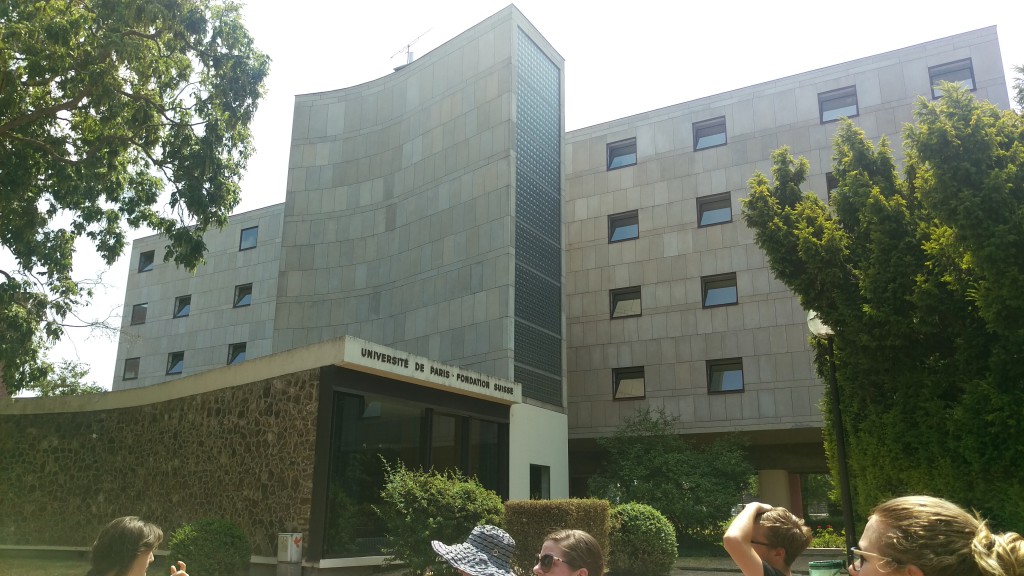
Swiss House
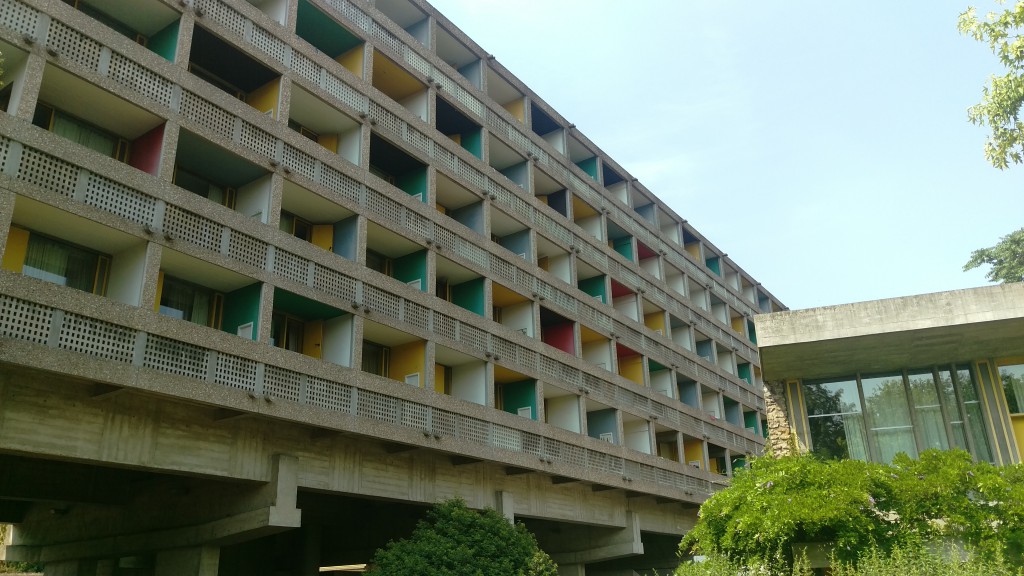
Back of Brazil House
and the Brazil house. These two buildings are some of the very first examples of modern architecture. They look like they were built in the 60s or the 70s, but were in fact built in the 30s. They were designed by the famous Swiss-French architect Le Corbusier, according to his rules of modern architecture. These two buildings are such important examples of modern architecture that they are actually part of the French equivalent of the National Register of Historic Places, and are protected by law. As the tour guide explained the architecture of the buildings, we really got a feel for the attention to detail and thought that went into designing them.
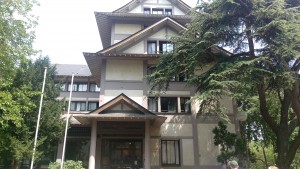
Japan House

Fondation Biermans-Lapôtre
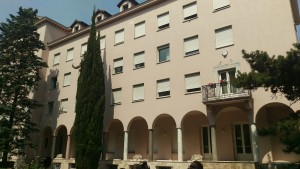
Italian House
After our architecture tour, we went back on the metro to the phone store and finally got the sim cards for our phones. Then we went back to the Cite U for dinner and to watch our first movie, Paris, je t’aime. It was a collection of funny and thought-provoking short films, each about a different arrondissement of Paris. They were all love stories in their own way.
Tommorrow we head out for an open bus tour of Paris! Can’t wait!

